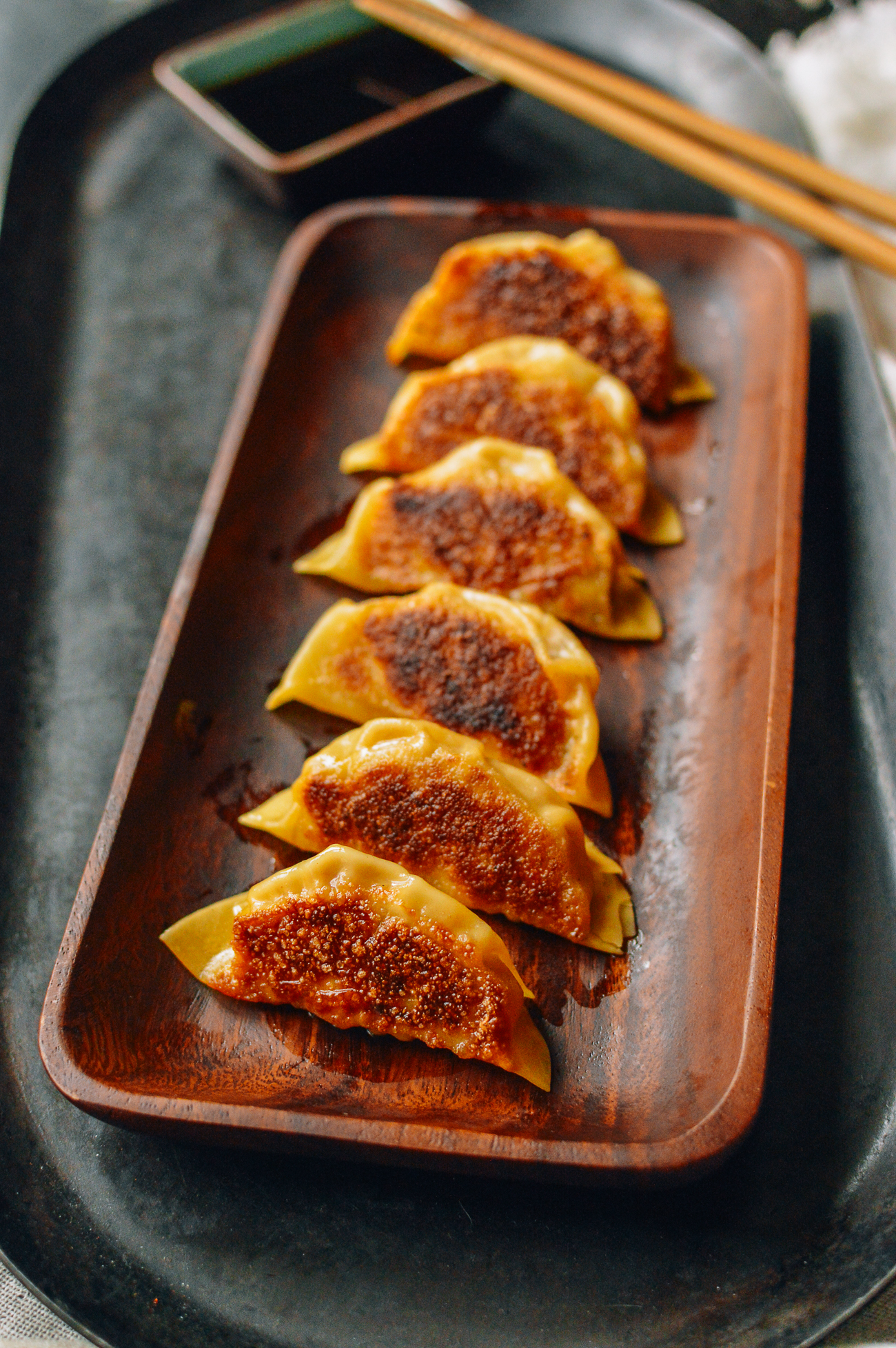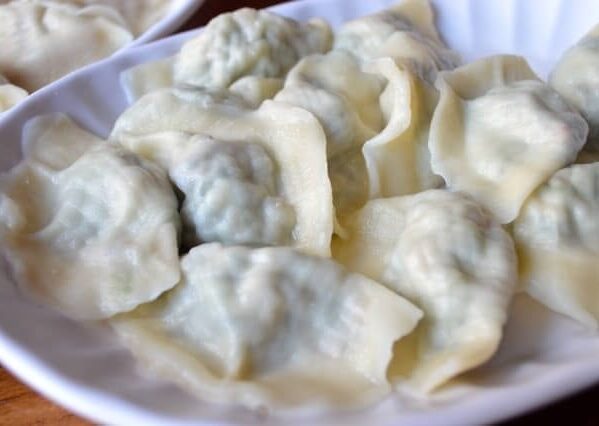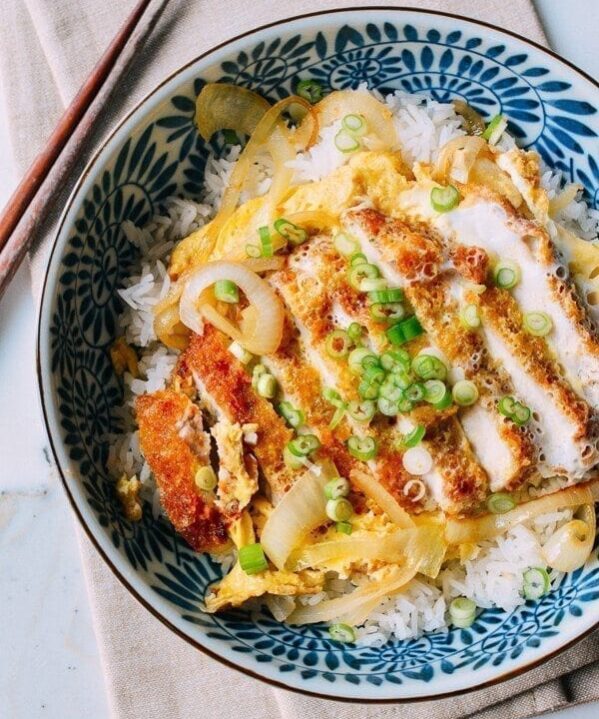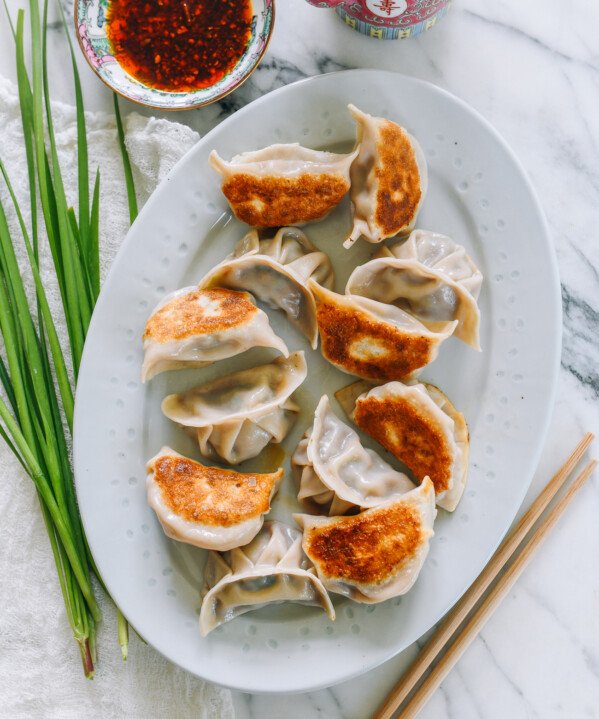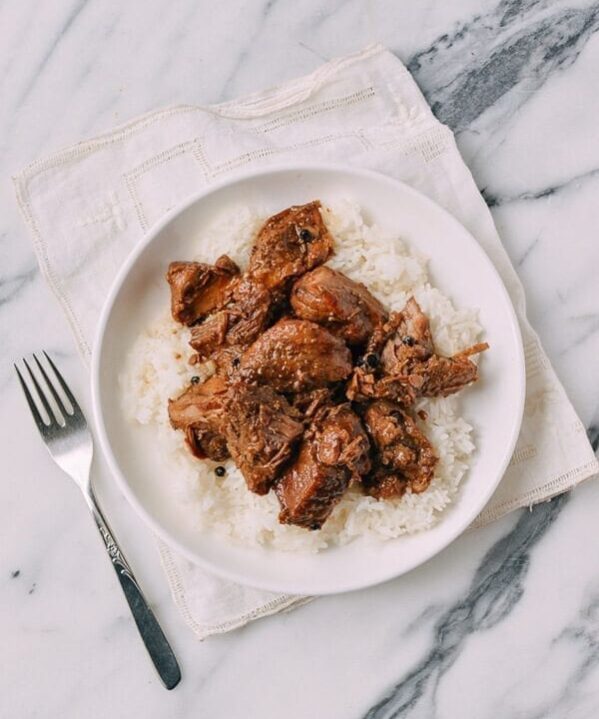These Japanese gyoza dumplings are easy to make ahead, freeze, and save for later. They’re a delicious appetizer, great for a crowd, and taste as good as the gyoza at your favorite Japanese restaurant.
While we use ground pork in this recipe, you could also make it with dark meat ground chicken!
The Art of Dumpling Making
If you ever need a last minute appetizer to serve to guests, dumplings or pot stickers really are the ticket! You can make a huge batch and freeze them. You don’t need to thaw them before cooking, and they’re ready within 15 minutes of turning on the stove. Plus, everyone loves them.
They’re also the perfect emergency meal when you’re hungry and don’t feel like cooking or don’t know what else to make.
I learned how to make dumplings at my grandmother’s knee. I got a rather early start, and it took a while before my clumsy five-year-old’s hands got the hang of the whole gyoza and dumpling-making process. It took me years to master the perfect fold.
That said, don’t be intimidated by the idea of making dumplings. You can start simply by folding the wrappers in half, and work your way up to more complicated pleating techniques. We have a post on 4 ways to fold dumplings to show you how.
Today, my sister and I are machines when it comes to dumpling assembly. When it’s time to make a batch, my grandmother just sits back, opens up a copy of InStyle magazine, and sips her hot water while watching years of patient teaching pay off.
We’ve posted many a dumpling recipe on this blog, including our go-to usual recipe, pork and chive dumplings, vegetable dumplings, chicken and mushroom dumplings, and even a crazy buffalo chicken dumpling.
Today, however, we’re going to make the Japanese version of these pan-fried packets of amazingness—gyoza.
Gyoza vs. Chinese Dumplings
In my mind, there are a few key differences between gyoza and Chinese dumplings (jiaozi – 饺子).
- The dumpling wrapper is a bit thinner
- The filling often has a distinct ginger and garlic flavor
- The meat and vegetable filling is often ground much finer, giving it a different texture
My dad has many fond memories of traveling to Japan on business trips and downing plates and plates of these with a bunch of coworkers. Always with plenty of Sapporo draft beer.
Needless to say, he was a big part in developing this particular recipe.
Let’s make ‘em.
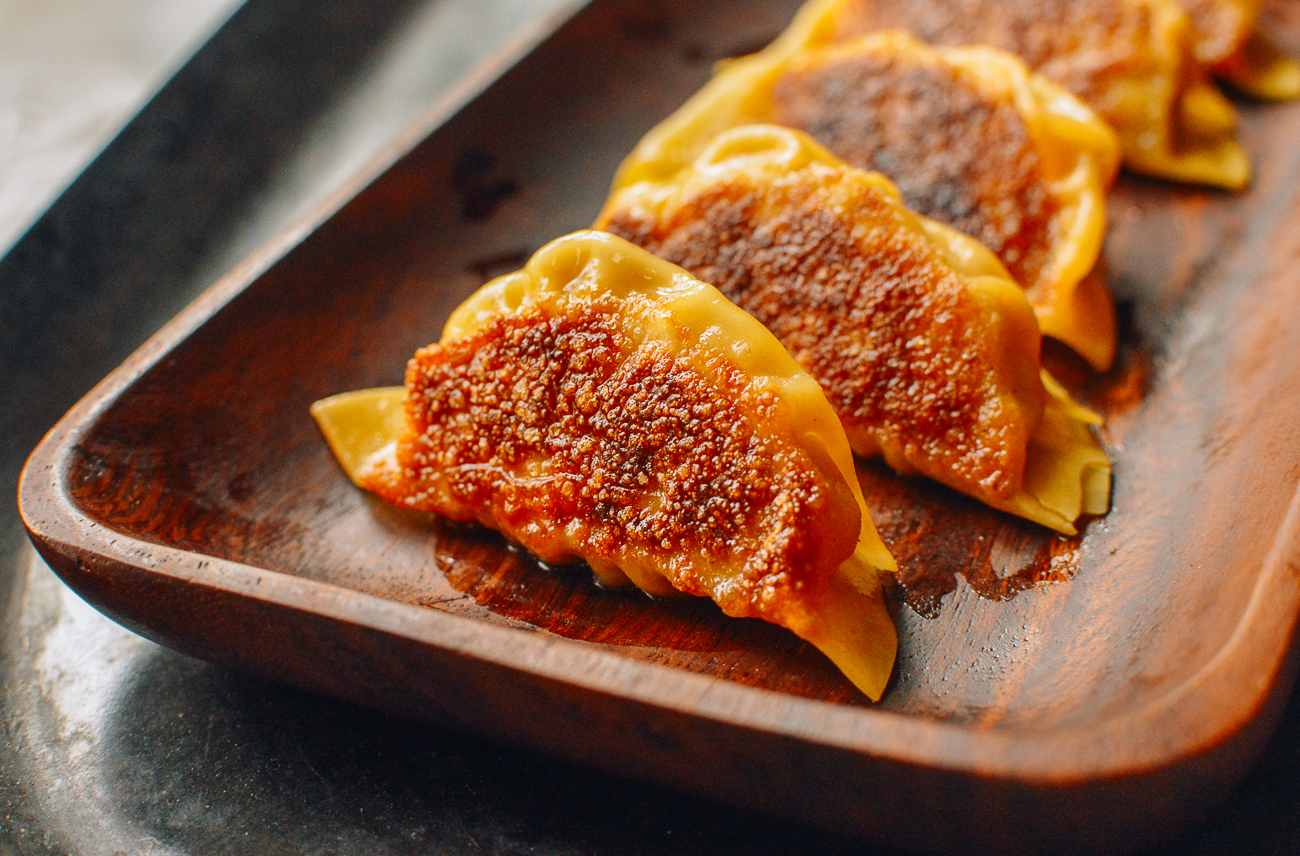
Gyoza Recipe InstructionS
Making the Filling
The ingredients for the filling are pretty simple. We’re using ground pork here along with napa cabbage. If you don’t eat pork, you can also use dark meat ground chicken.
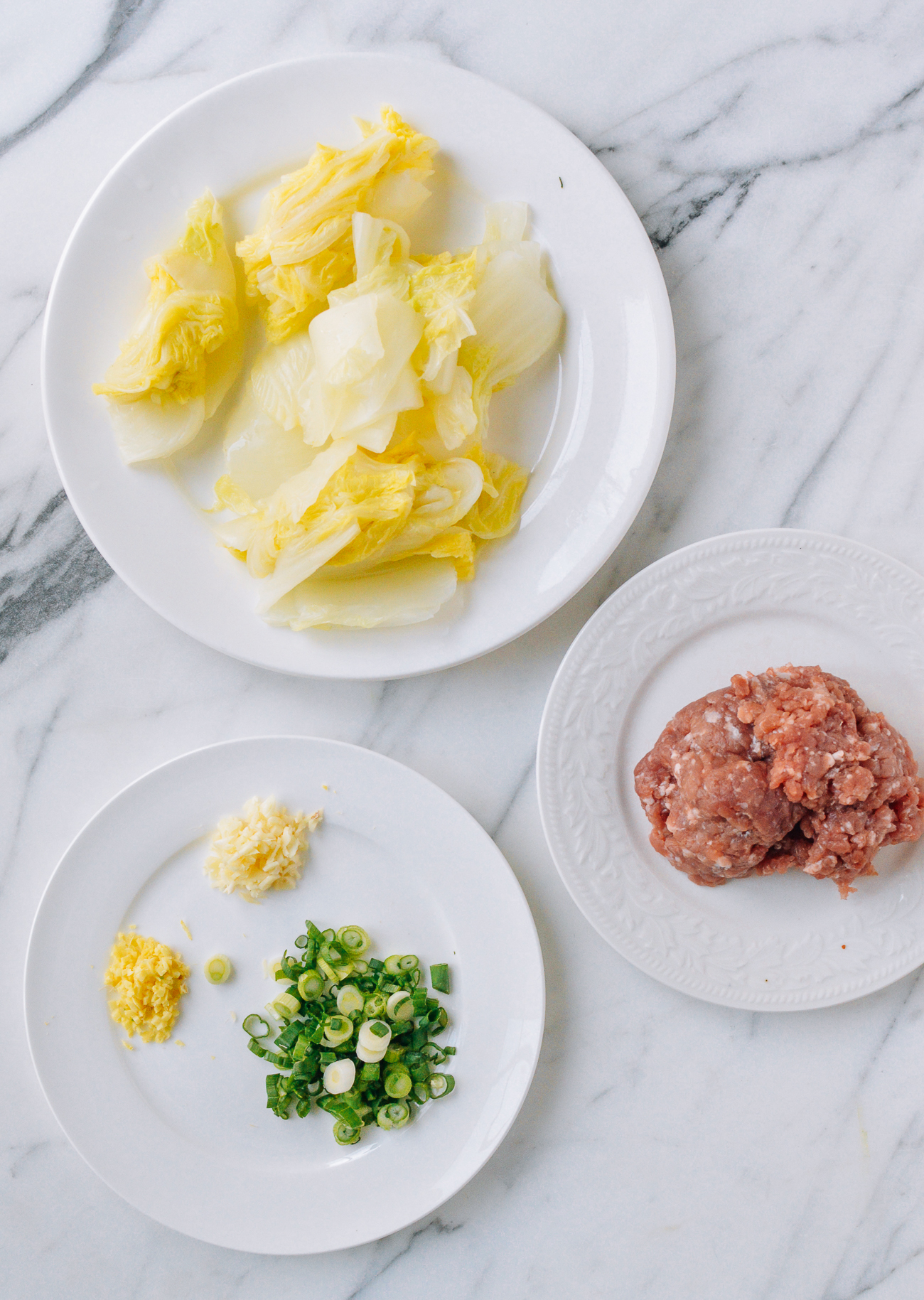
Begin by blanching the napa cabbage in boiling water for 30 seconds. Drain the cabbage in a colander and rinse with cold water. Squeeze any excess moisture from the cabbage with your hands.
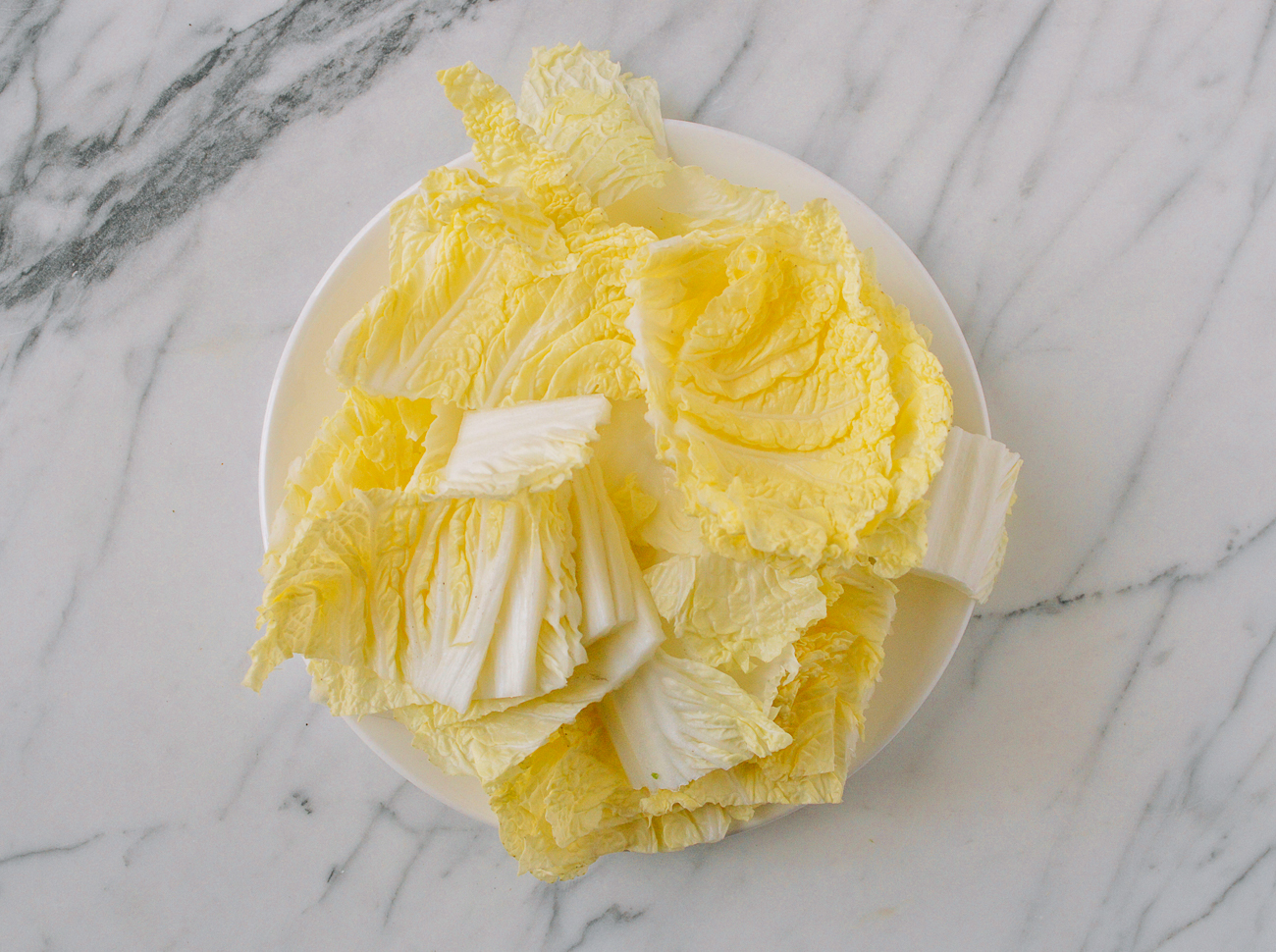
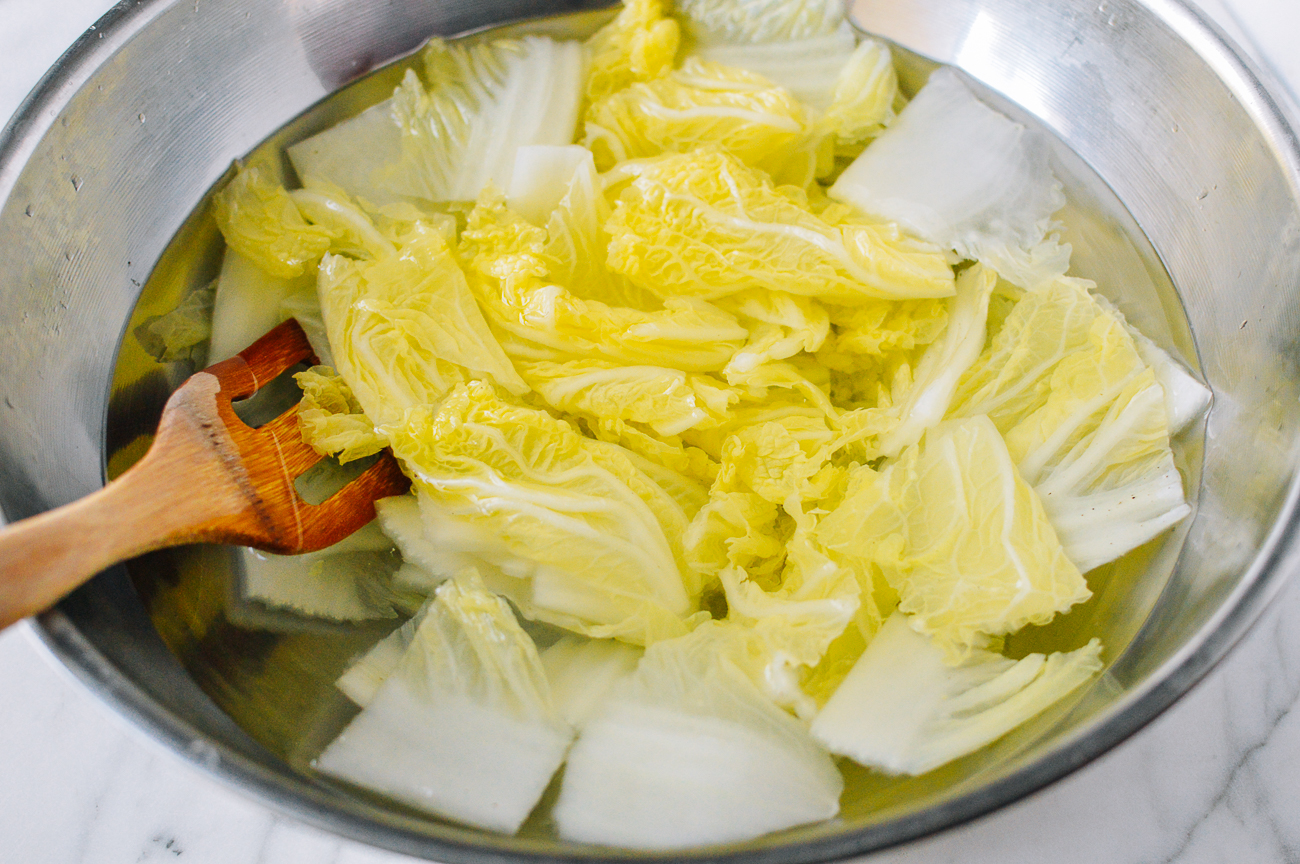
To the food processor, add the blanched cabbage, ground pork, smashed garlic, ginger, scallion (AKA green onions), 2 tablespoons vegetable oil, sesame oil, soy sauce, sugar, salt and white pepper. Pulse the mixture in the food processor until the filling is well-combined.
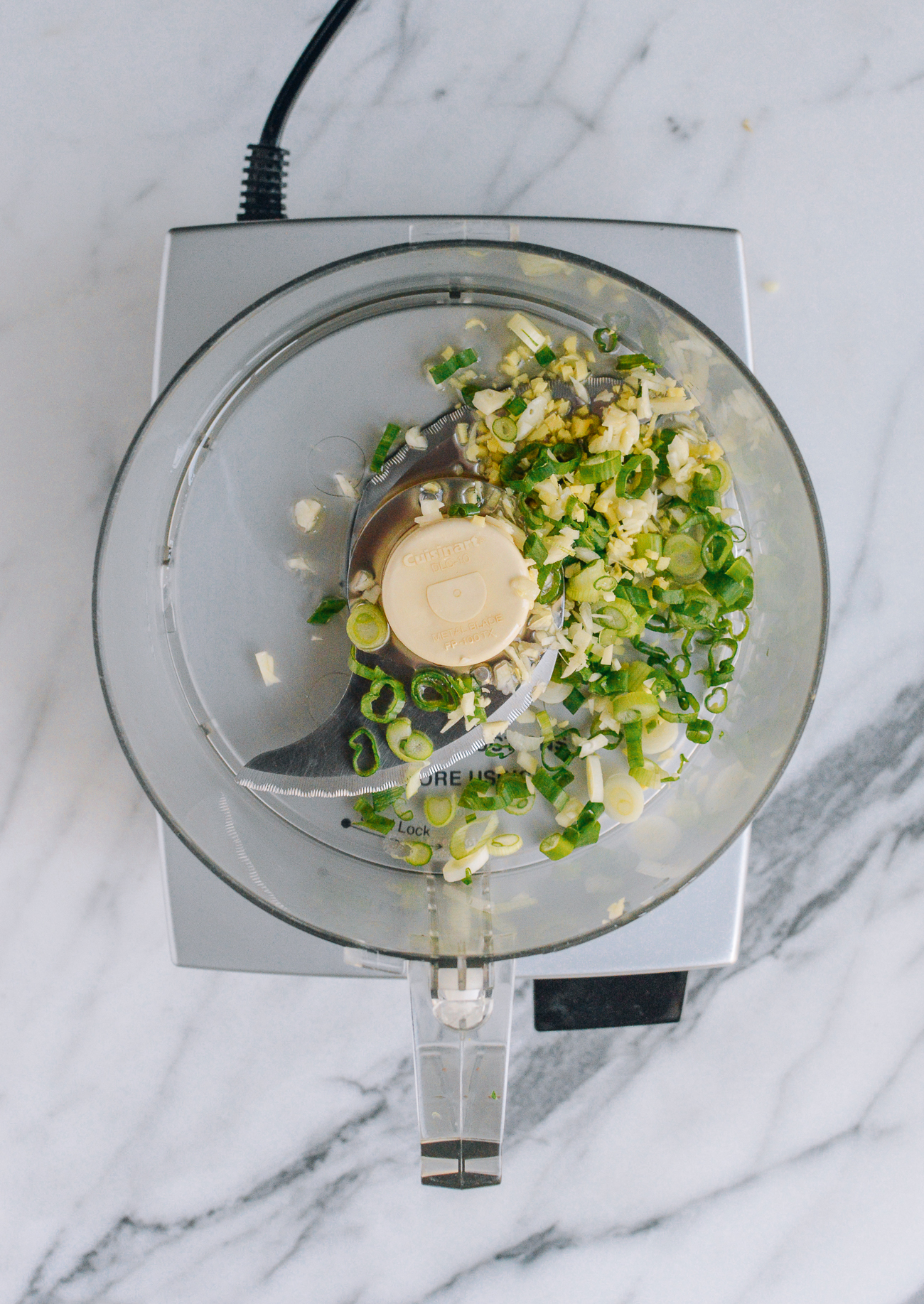
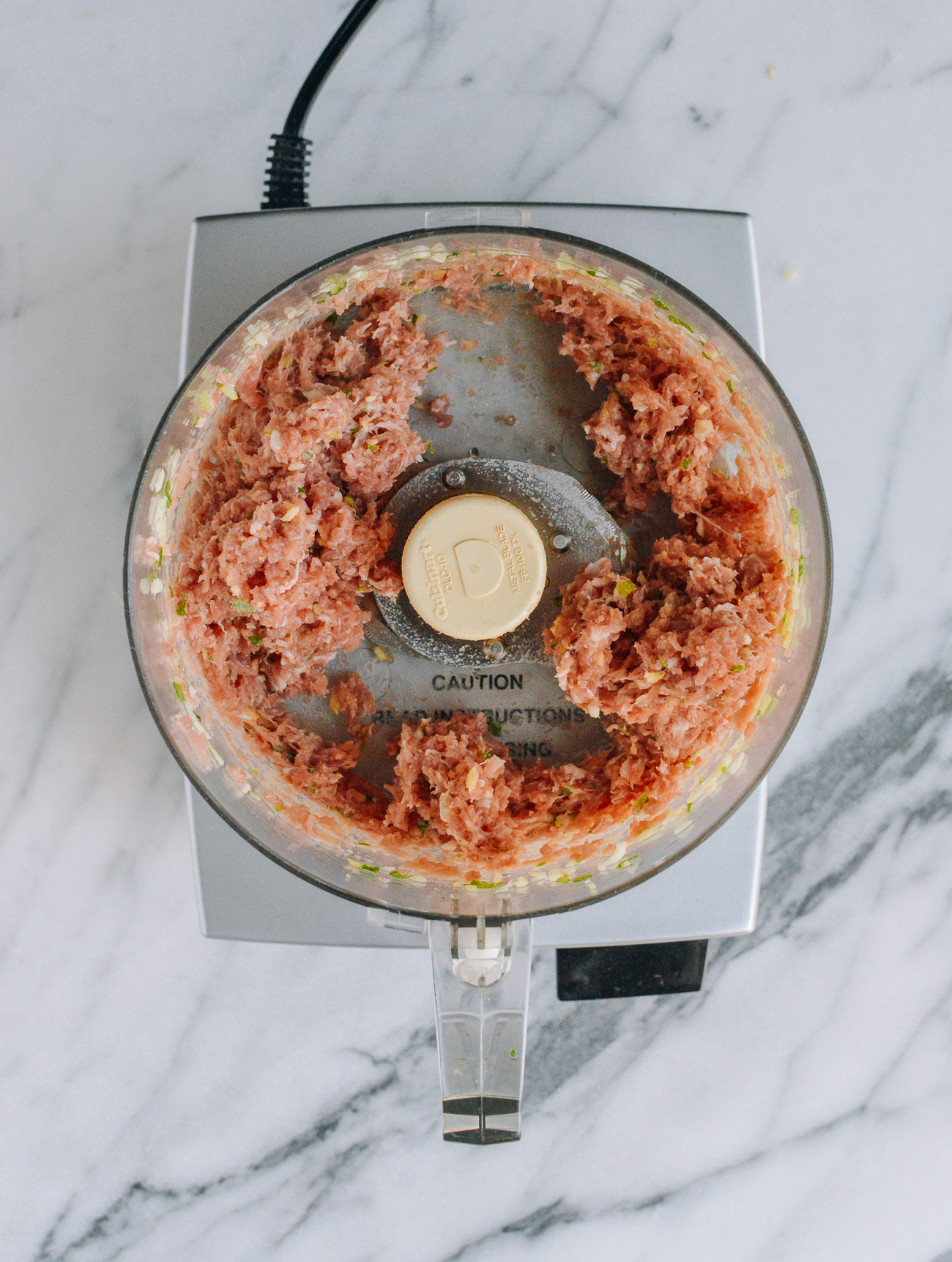
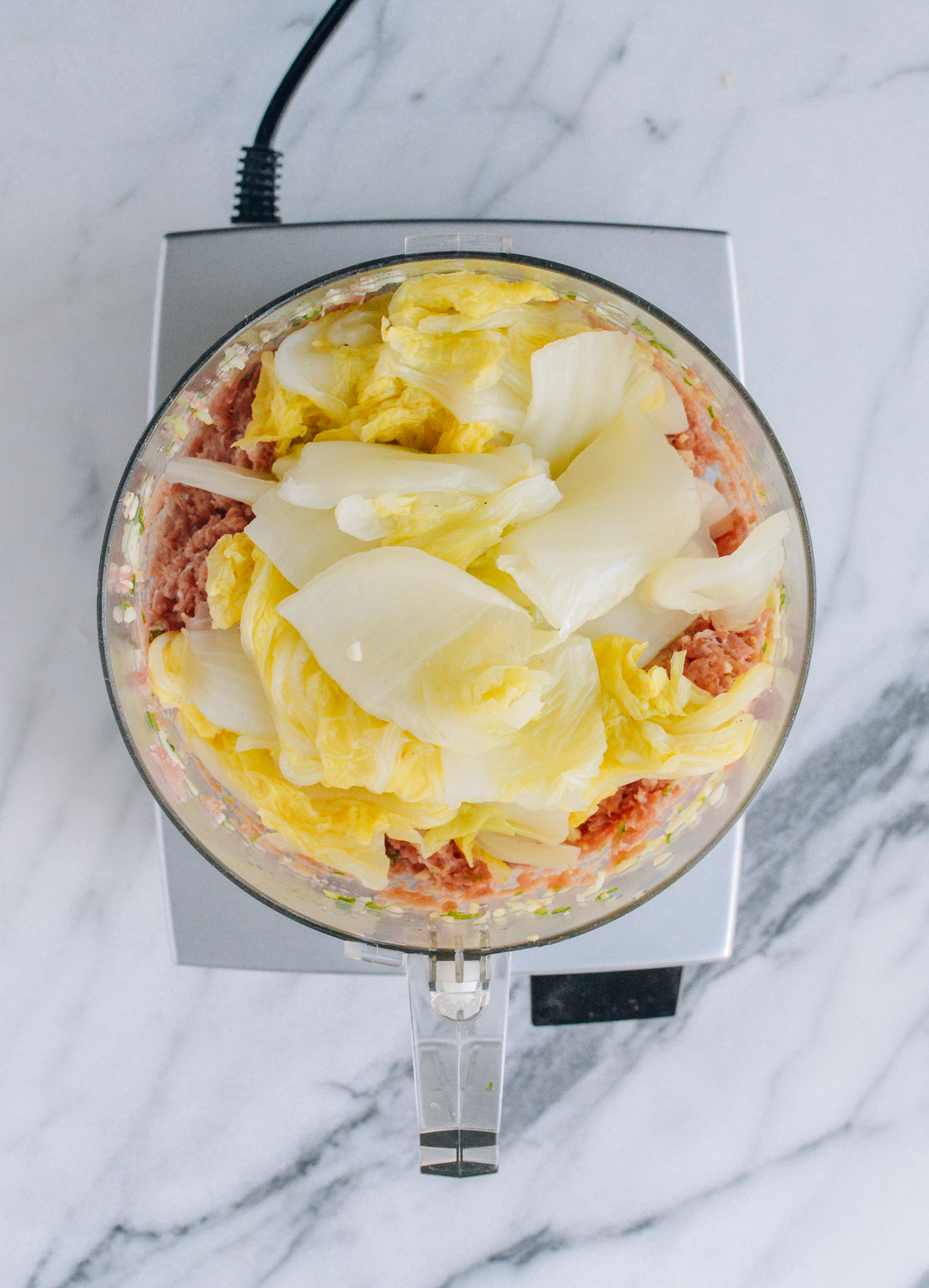
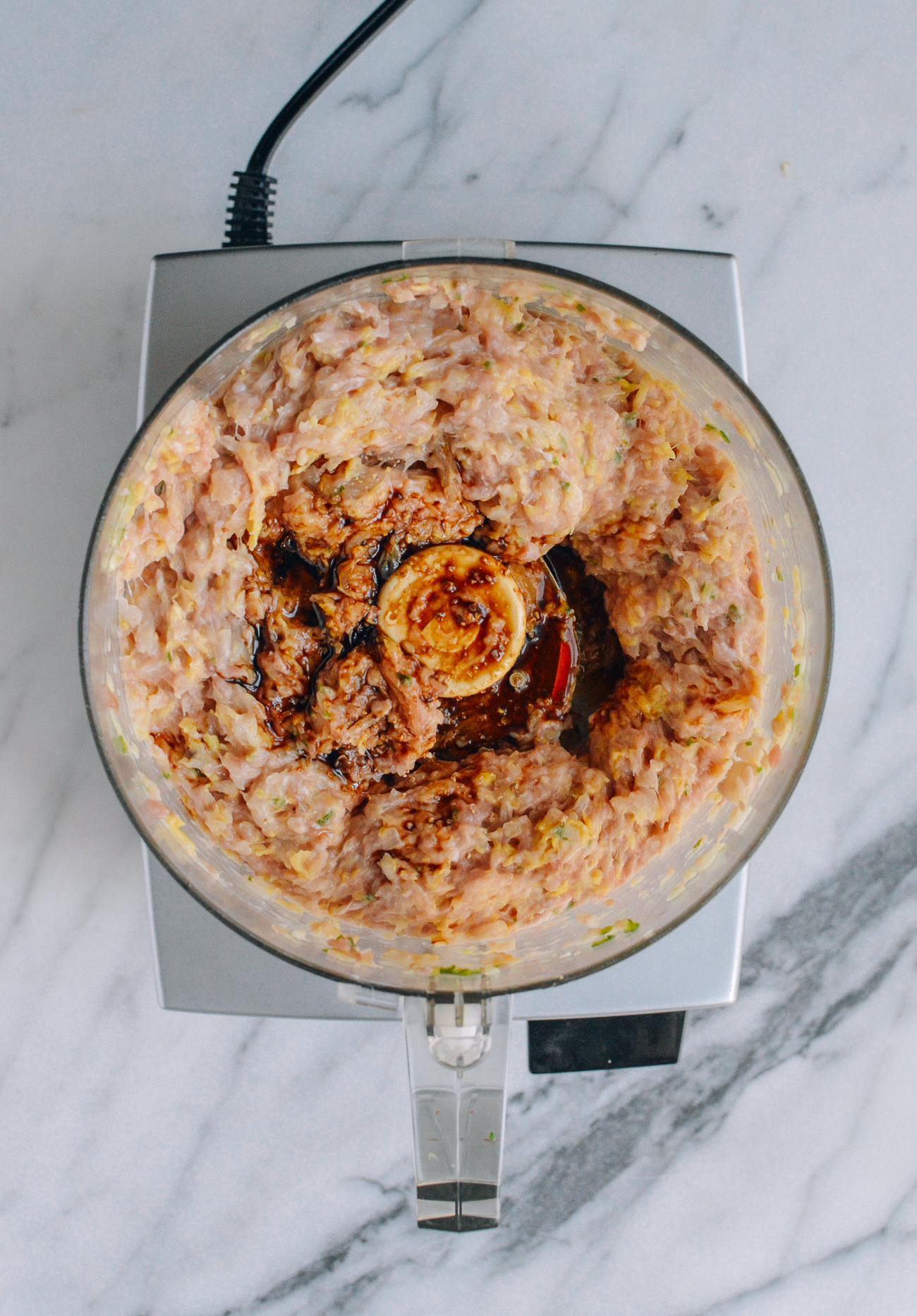
Assembling the Gyoza
Prepare sheet pans or cookie sheets lined with plastic wrap or parchment paper. To assemble the dumplings, place about 2 teaspoons of filling in the middle of each wrapper.
Use your finger dipped in a small bowl of fresh water to moisten the outer edges of the wrapper. You could simply fold them in half, or you can pleat them as you see in the photos. (Check out our full tutorial on how to fold dumplings/gyoza.). Make sure to seal them well.
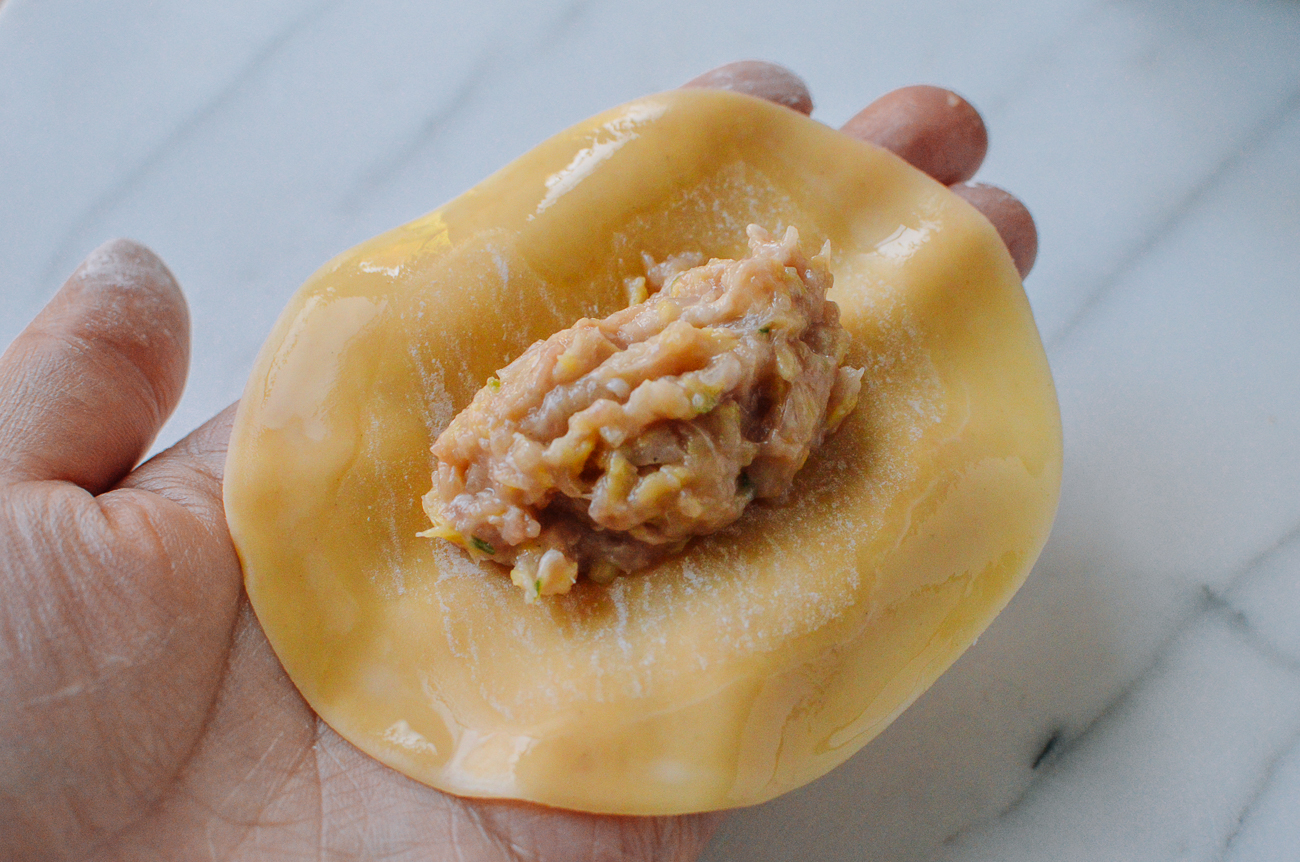
Notice again how thin these gyoza wrappers are. They were harder to find but thin skins are a must for the more delicate Japanese gyoza dumplings.
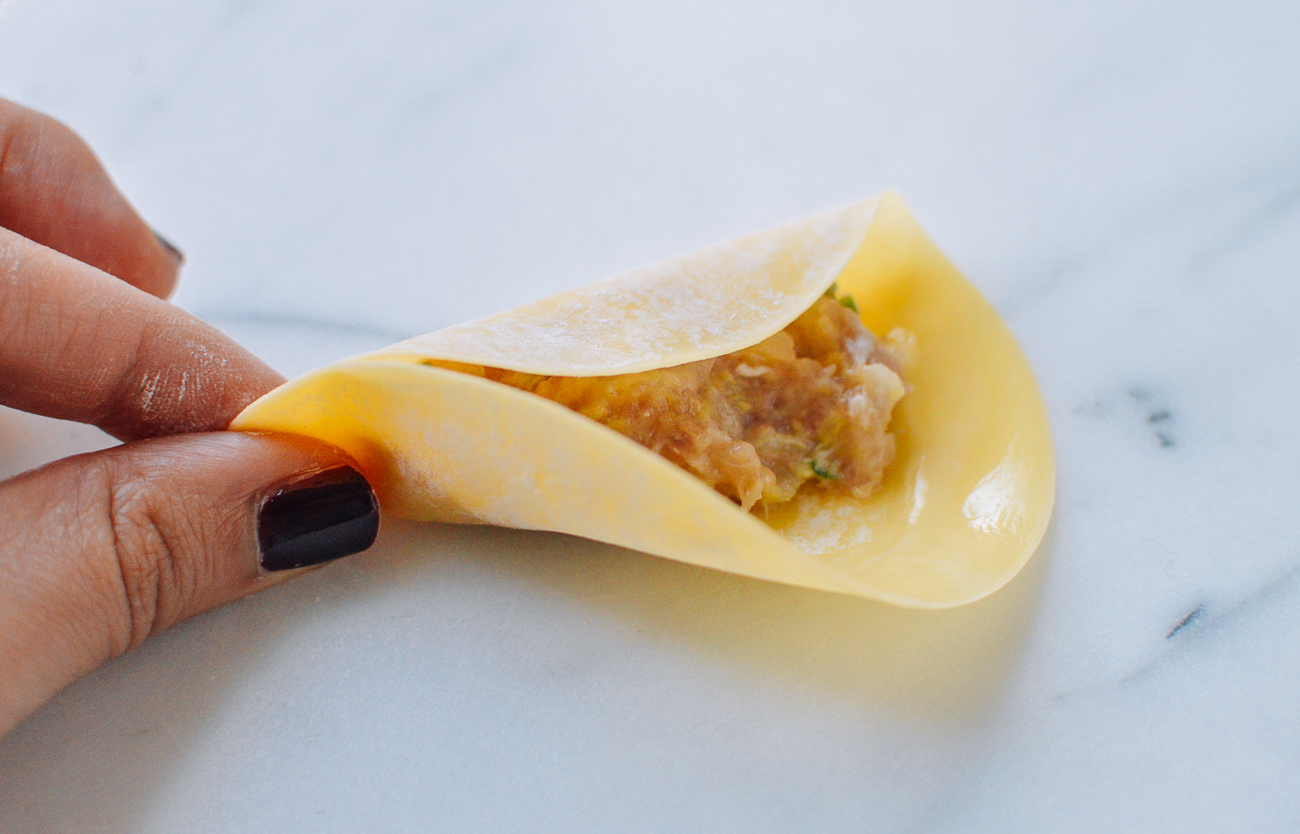
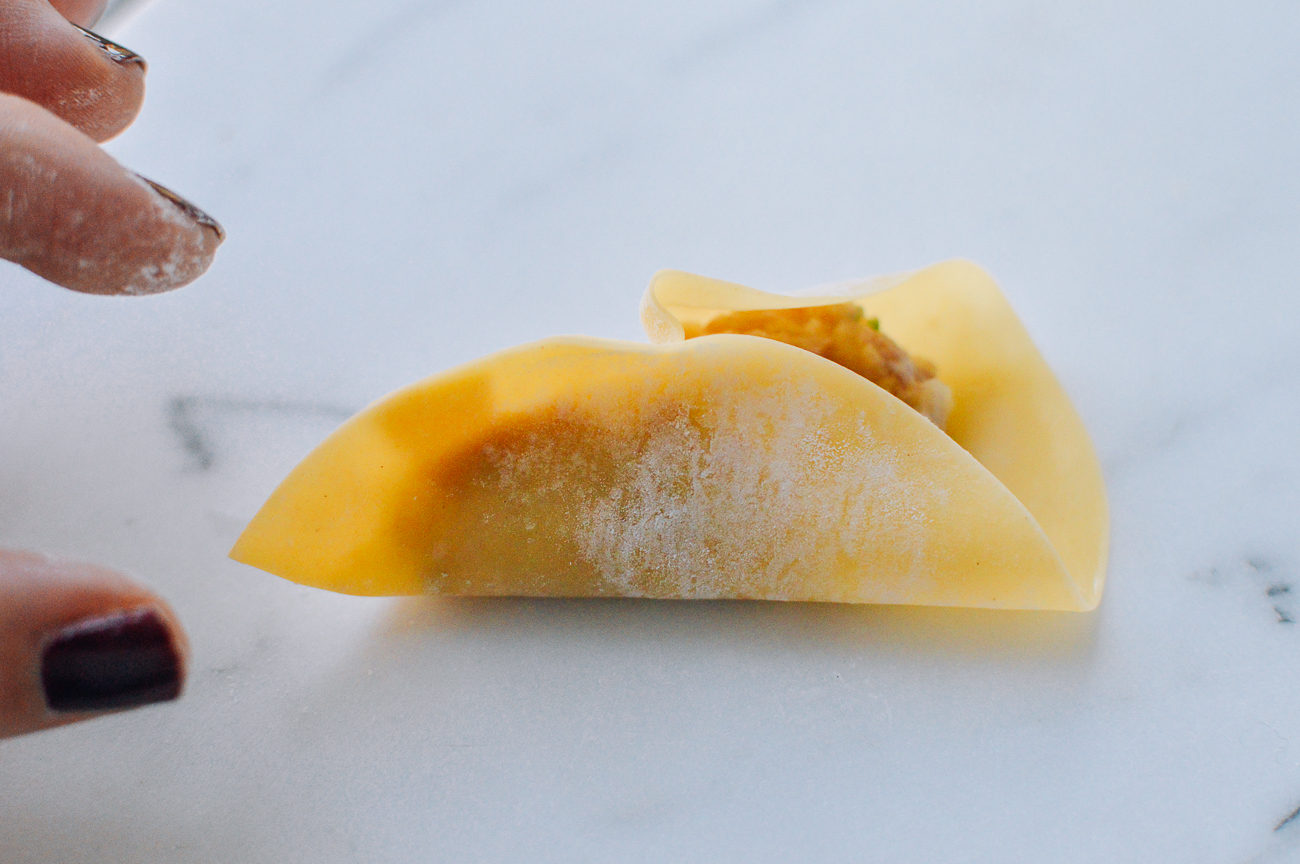
As you assemble them, place on a parchment-lined baking sheet so they aren’t touching. You can then cover and freeze them solid (overnight) before transferring to freezer bags. Or you can cook them right away!
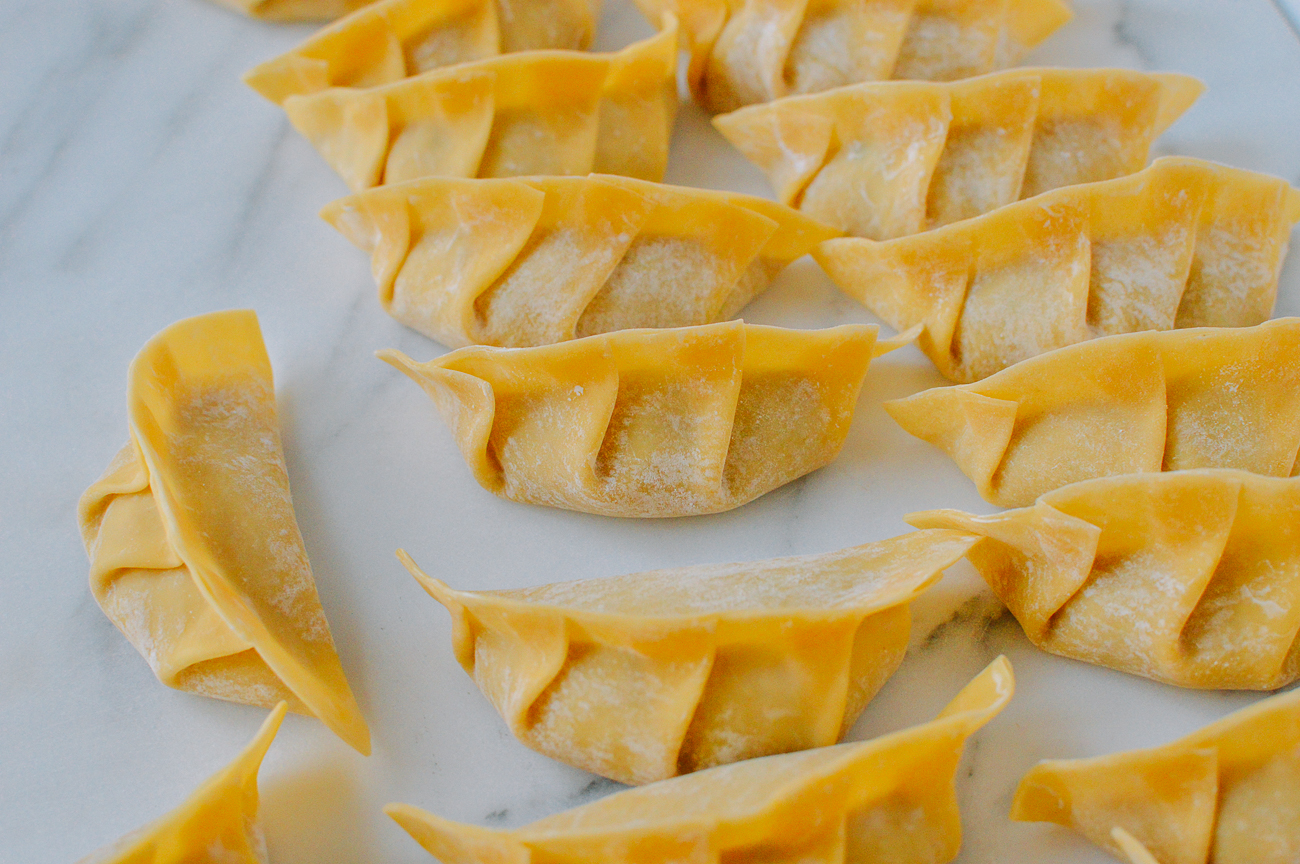
Cooking the Gyoza
Heat a tablespoon of cooking oil in a nonstick or cast iron skillet over medium high heat. Place the gyoza in the pan. Fry until the bottom of the gyoza become crispy and golden, about 2-3 minutes.
When the gyoza have fried, add 1 tablespoon of water to the hot pan and immediately cover the pan with a tight-fitting lid to steam the dumplings as they pan-fry.
We use much less water than Chinese dumplings since the skins are so thin and they cook much faster than potstickers with thicker store-bought dumpling skins or Chinese dumplings with home made skins.
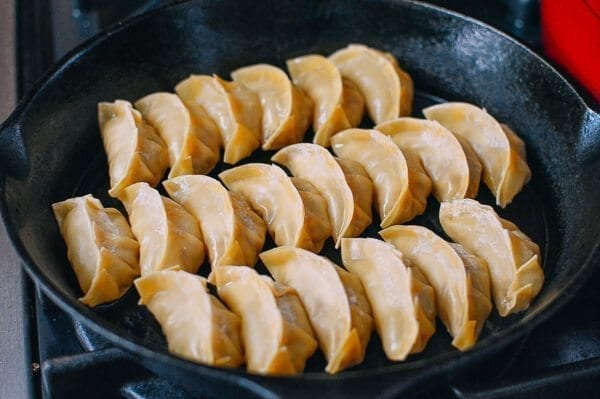
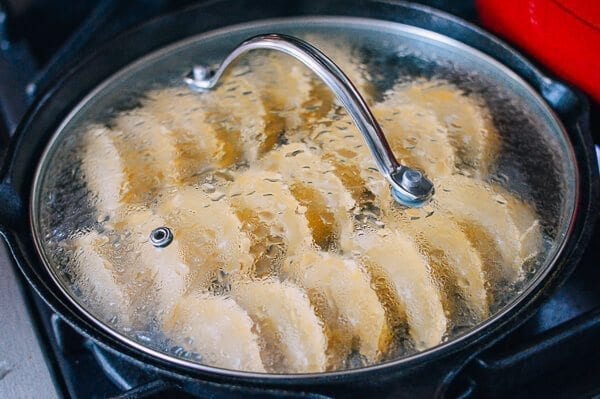
Let the dumplings steam until the water has evaporated (about 2 minutes). Remove the cover, and continue cooking until the bottoms of the gyoza get crispy again.
With the thinner skins and the finely ground filling, Gyoza cook much faster as well! For more alternative methods on cooking them, see Sarah’s post on How to cook dumplings
Prepare your dipping sauce by combining the soy sauce, rice vinegar, hot water, and sugar in a small bowl, and serve alongside the crispy gyoza!
For more variations on dipping sauces, see our recipe for traditional dumpling sauce.
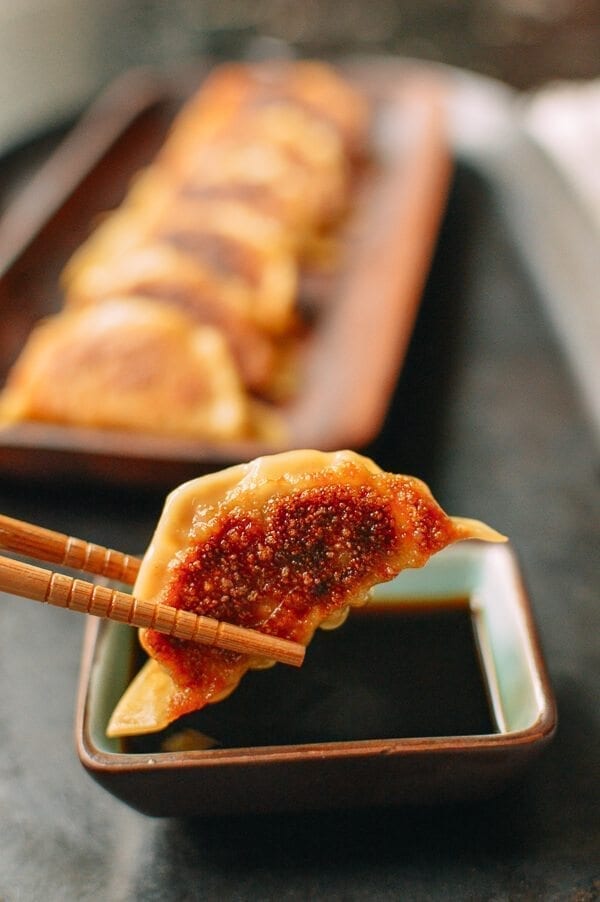
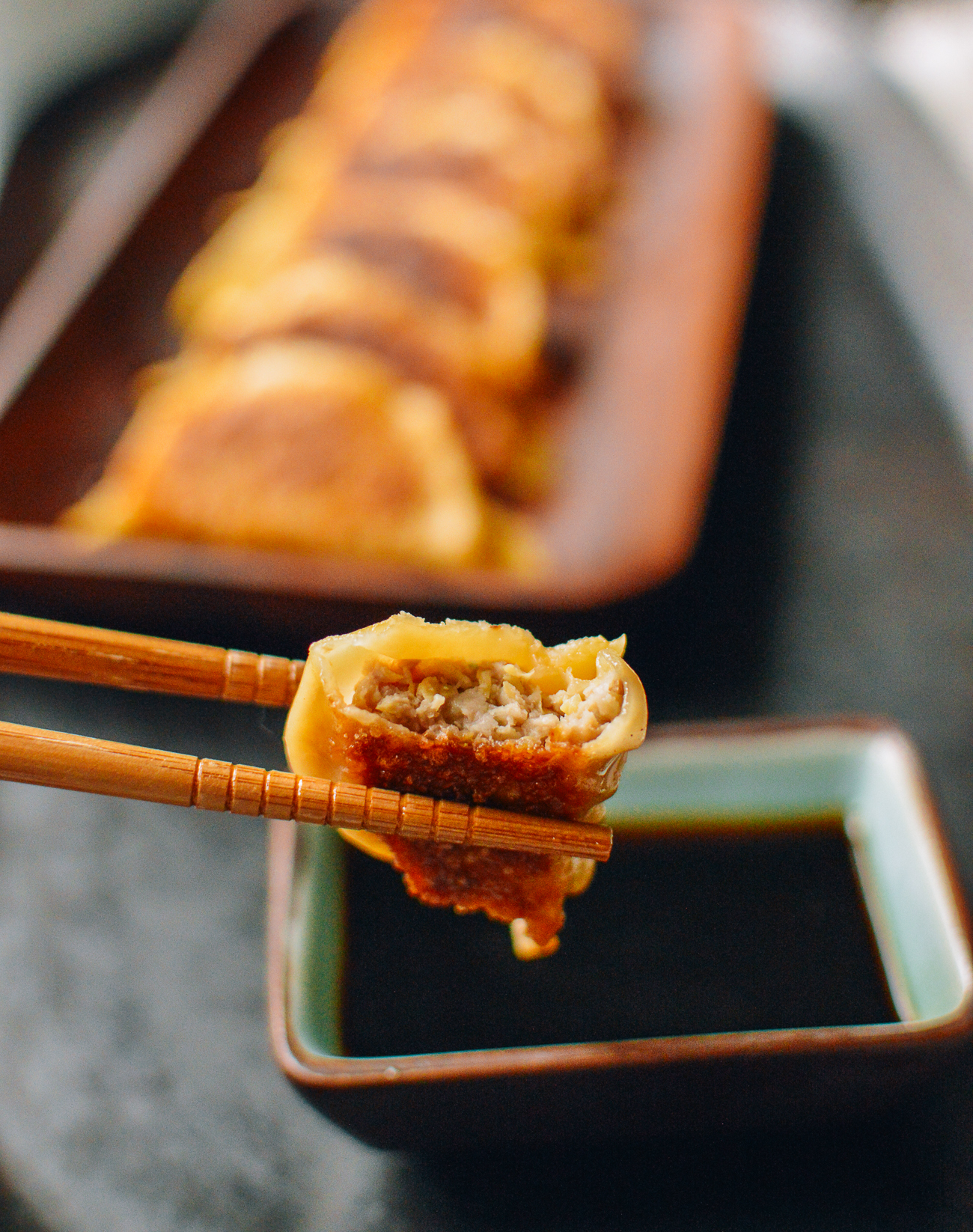
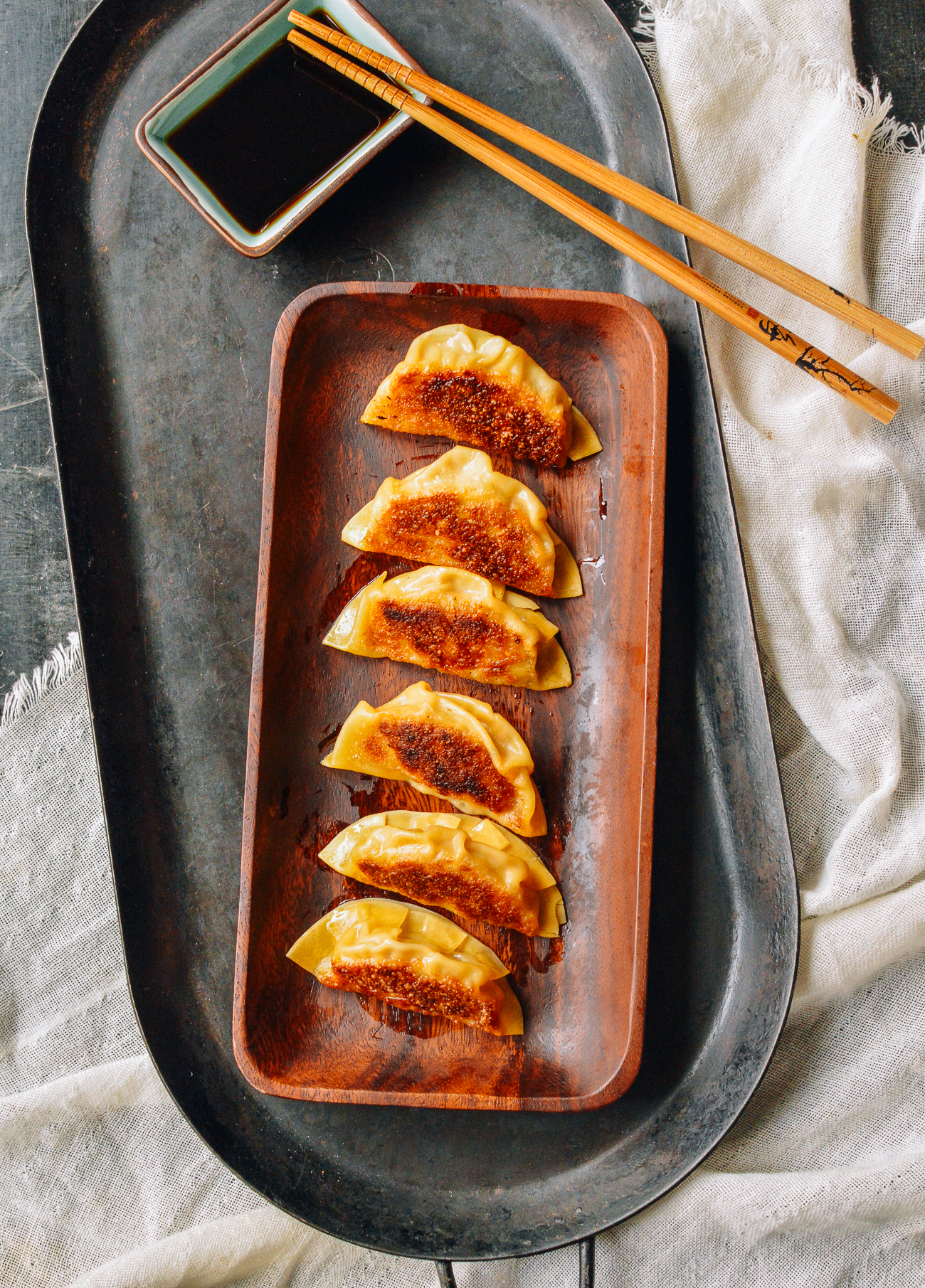
Japanese Gyoza Dumplings
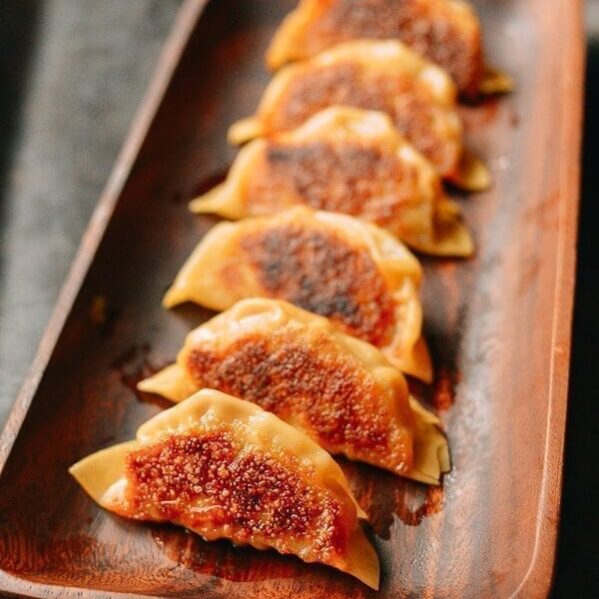
Ingredients
You’ll need:
- 1 pound napa cabbage (about 5 cups, roughly chopped into large pieces)
- 8 ounces ground pork (70% to 80% lean)
- 1 clove garlic (smashed)
- 1 1/2 teaspoons fresh ginger (minced)
- 1 scallion (chopped)
- 2 tablespoons vegetable oil (plus more for pan-frying)
- 1/2 teaspoon sesame oil
- 2 teaspoons soy sauce
- 3/4 teaspoon sugar
- 1/2 teaspoon salt
- 1/8 tsp white pepper
- Store-bought gyoza wrappers
For the dipping sauce:
- 2 tablespoons soy sauce
- 1 teaspoon rice vinegar
- 1 tablespoon hot water
- 1 teaspoon sugar
Instructions
- Begin by blanching the napa cabbage in boiling water for 30 seconds. Drain the cabbage in a colander and rinse with cold water. Squeeze any excess water from the cabbage with your hands.
- To the food processor, add the blanched cabbage, ground pork, smashed garlic, ginger, scallion, 2 tablespoons vegetable oil, sesame oil, soy sauce, sugar, salt and pepper. Pulse the mixture in the food processor until the filling is well-combined.
- Prepare sheet pans or cookie sheets lined with plastic wrap or parchment paper. To assemble the gyoza, place about 2 teaspoons of filling in the middle of each wrapper, and use your finger dipped in a small bowl of fresh water to moisten the outer edges of the wrapper. You could simply fold them in half, or you can pleat them as you see in the photos. Make sure they are well-sealed.
- Heat a tablespoon of cooking oil in a nonstick or cast iron skillet over medium high heat. Place the gyoza in the pan and fry until the bottom of the gyoza become crispy and golden, about 2-3 minutes.
- When the gyoza have fried, add 1 tablespoon of water to the hot pan and immediately cover the pan to steam the dumplings. Let the gyoza to steam until the water has evaporated (about 2 minutes), remove the cover, and continue cooking until the bottoms of the gyoza get crispy again.
- Prepare your dipping sauce by combining all the sauce ingredients in a small bowl, and serve alongside the crispy gyoza!
